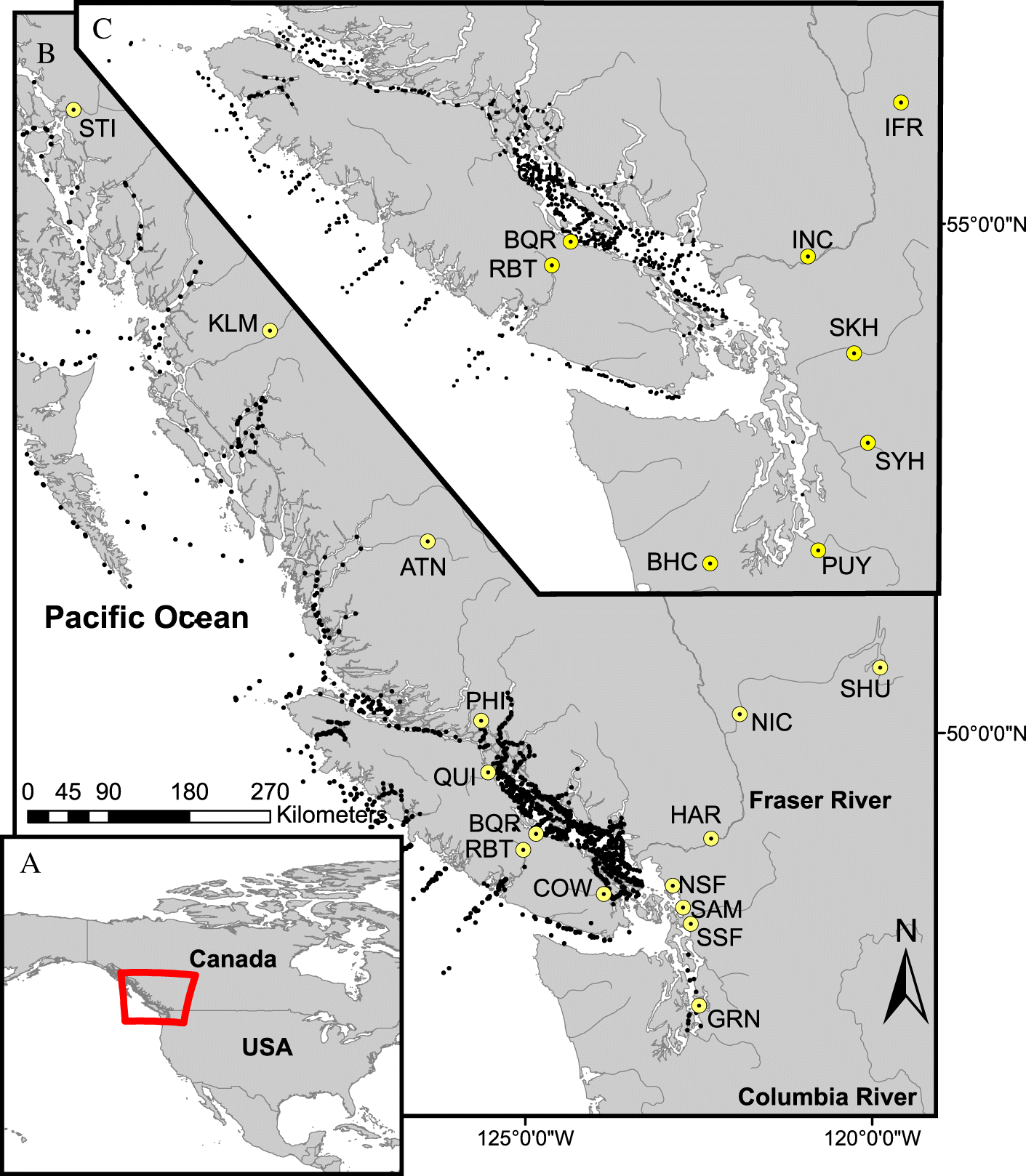2022-05-19 カナダ・ブリティッシュコロンビア大学(URC)
UBC森林学部のアーサー・バスが率いるこの研究は、Strategic Salmon Health Initiativeのデータを使用し、BC州沿岸で10年間に採取された数千匹のチヌークサーモンとギンザケから数十の病原体を評価したものである。
研究者たちは初めて、海洋で自由に行動するパシフィックサーモンの生存に最も密接に関連する病原体を特定することができたのです。この病原体は、世界中のサケやその他の養殖海洋魚に潰瘍性疾患を引き起こす細菌Tenacibaculum maritimumと、世界中の太平洋サケおよび大西洋サケに疾患を引き起こすが、BC州のサケへの影響については激しく議論されているウイルスpiscine orthoreovirus(PRV)である。
<関連情報>
- https://news.ubc.ca/2022/05/19/two-pathogens-linked-to-salmon-health-and-survival-in-b-c/
- https://www.facetsjournal.com/doi/10.1139/facets-2021-0102
海産初期のチヌークおよびギンザケにおけるコホート生存に関連する感染因子の同定 Identification of infectious agents in early marine Chinook and Coho salmon associated with cohort survival
Arthur L. Bass, Andrew W. Bateman, Brendan M. Connors, Benjamin A. Staton, Eric B. Rondeau, Gideon J. Mordecai, Amy K. Teffer, Karia H. Kaukinen, Shaorong Li, Amy M. Tabata, David A. Patterson, Scott G. Hinch, and Kristina M. Miller
FACETS Published:19 May 2022
DOI:https://doi.org/10.1139/facets-2021-0102

Abstract
Recent decades have seen an increased appreciation for the role infectious diseases can play in mass mortality events across a diversity of marine taxa. At the same time many Pacific salmon populations have declined in abundance as a result of reduced marine survival. However, few studies have explicitly considered the potential role pathogens could play in these declines. Using a multi-year dataset spanning 59 pathogen taxa in Chinook and Coho salmon sampled along the British Columbia coast, we carried out an exploratory analysis to quantify evidence for associations between pathogen prevalence and cohort survival and between pathogen load and body condition. While a variety of pathogens had moderate to strong negative correlations with body condition or survival for one host species in one season, we found that Tenacibaculum maritimum and Piscine orthoreovirus had consistently negative associations with body condition in both host species and seasons and were negatively associated with survival for Chinook salmon collected in the fall and winter. Our analyses, which offer the most comprehensive examination of associations between pathogen prevalence and Pacific salmon survival to date, suggest that pathogens in Pacific salmon warrant further attention, especially those whose distribution and abundance may be influenced by anthropogenic stressors.


